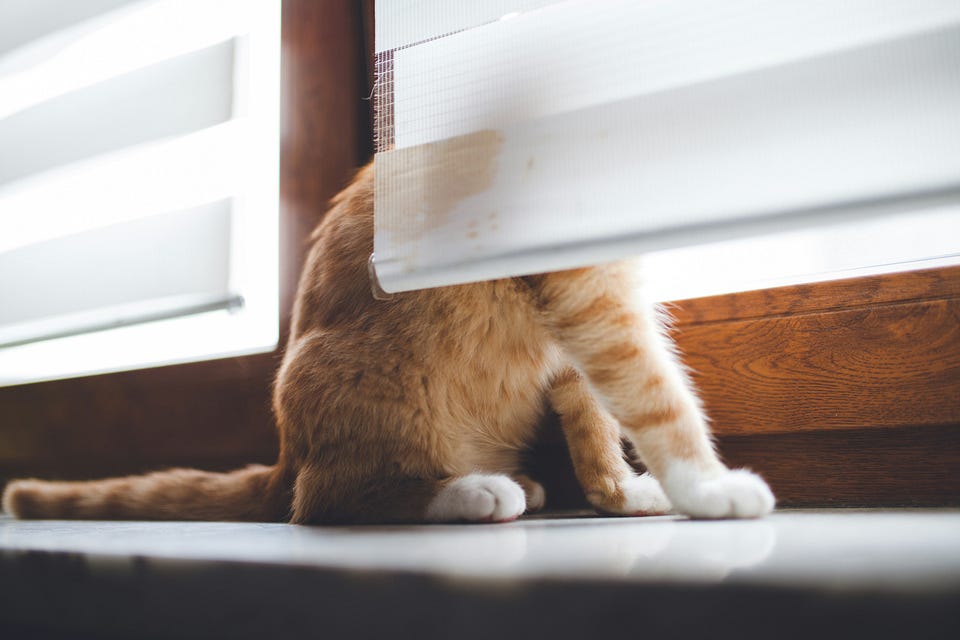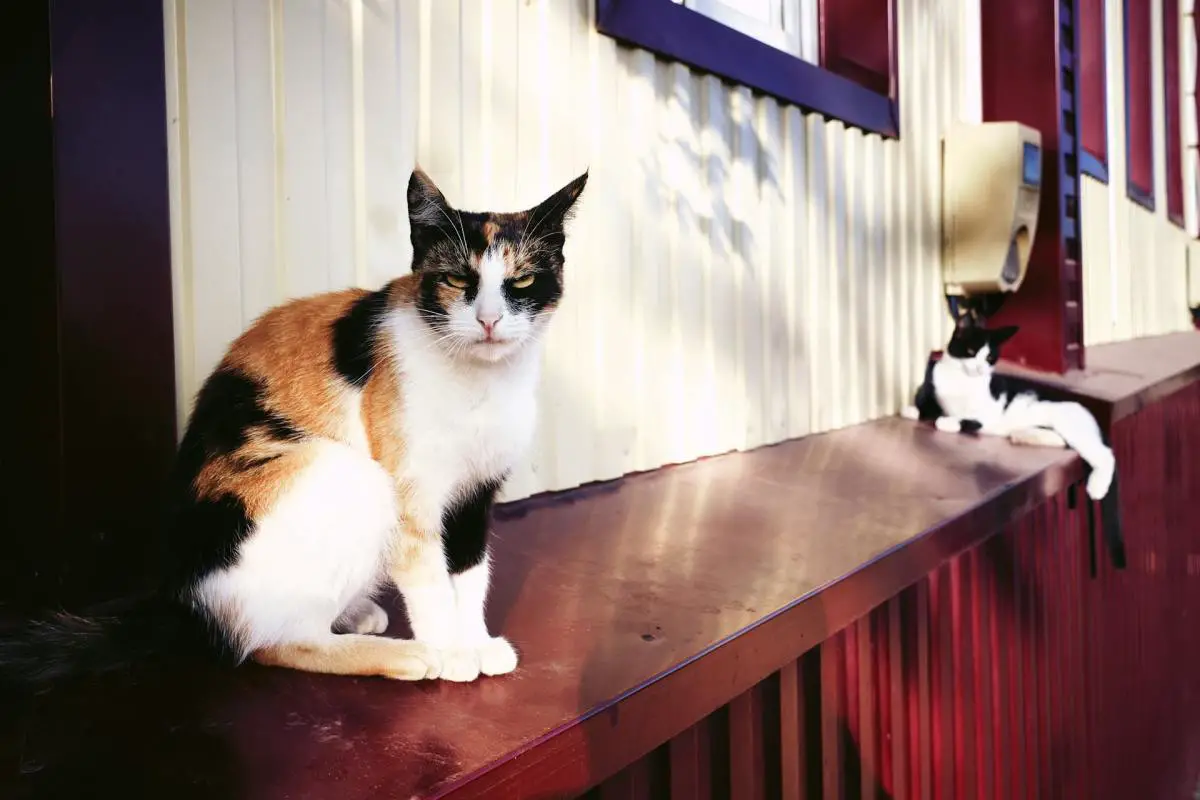Are you living with a cat that doesn’t seem to like you (or be all that interested in you)? You’re not alone there! Cats take time to build trust, especially if they’re new to your home or come from a difficult past. This article walks through why that disconnect happens, how to handle it without pushing them away, and why the patience is worth it.
That Awkward Roommate Phase
When I first brought home my first cat, Ivy, I was immediately smitten—and thankfully, so was she. She’s the kind of cat who seeks you out, curls up in your arms, and makes you feel like you’re her whole world. She made being a cat parent feel intuitive.
Then came Gremlin.
He was shy and definitely wasn’t interested in people. He’d pass right by me, avoid interaction, and settle into whatever spot gave him the most distance. It felt personal, but I knew it wasn’t. And that’s something a lot of cat parents struggle with when the bond doesn’t come naturally or immediately.
Why Some Cats Keep Their Distance
Cats aren’t always the instantly loving, cuddly pets people expect. While some are social from the start, others are slower to warm up — or simply prefer more independence. If your cat avoids you, it’s likely not a reflection of you as a pet parent.
Some Common Reasons:
- Adjustment to a new home: A change in environment can be overwhelming, especially for adult cats or those from shelters.
- Past experiences: Cats who’ve experienced trauma or neglect may need more time to feel safe again.
- Naturally cautious temperament: Some cats are just more reserved — it’s part of who they are.
- Unintended pressure: Too much attention too quickly can overwhelm them, especially when they’re figuring you and everything else out.
💡Did You Know? Cats showing emotional flatness (no interest in toys, play, or interaction) may be experiencing what’s known as disengaged behavior. Things like scent-based enrichment (worn clothing or pheromone diffusers) help spark curiosity and reduce stress.
What Helped Me Connect with a Cat Who Didn’t Want To
When Gremlin came to us, he was scared, quiet, and guarded. He watched from across the room, flinched if I moved too fast, and made it clear he wasn’t ready for interaction. What helped was watching how quickly he bonded with my middle cat, Rob Zombie. They were always together, and Gremlin clearly felt safest around him.
Rob Zombie balanced everything out between the cats — he enjoyed people and respected Gremlin’s boundaries. So I took the same approach: no expectations, just quiet consistency. Over time, he started showing up in shared spaces — on the windowsill, across the room, near the couch.
We never really have a big breakthrough moment. But there was trust in the way he stayed, and that’s what mattered.

How to Build a Stronger Bond
If you’re trying to connect with a kitty who keeps their distance, the best thing you can do is focus on creating an environment that supports safety — not pressure.
Bonding with your cat is about respect, predictability, and patience, which means not forcing interaction. It’s not about winning them over, it’s about making it clear that you’re a safe presence in their eyes.
Here are a few gentle strategies that can help:
- Let them make the first move: Sit in the same room and let them approach when they’re ready.
- Avoid direct stares: In cat language, eye contact can feel threatening. Instead, try slow blinking.
- Stick to a routine: Cats are creatures of habit and feel safer when their day follows a predictable rhythm.
- Create hiding spots and vertical spaces: These are great at giving your cat their own personal spaces and building confidence.
- Use soft, positive reinforcement: If they come around or show interest, reward them with a treat or gentle verbal praise.
✅ Pro tip: Cats are more likely to explore or engage when they feel confident and in control of their environment. Vertical spaces — like cat shelves, window hammocks, or towers — give shy cats the ability to stay nearby without feeling exposed.
Subtle Signs Your Cat is Starting to Trust You
Bonding with a reserved cat rarely comes with a dramatic turning point. Instead, it’s often marked by quiet, small shifts in behavior that show your cat is starting to feel safe around you.
Watch for Signs Like:
- Choosing to nap in the same room as you (bonus points if they’re on the same couch or bed!).
- Grooming themselves nearby, which can be a sign of comfort.
- Sitting or lying with their back facing you.
- Following you from room to room.
- Chirping or meowing softly when you enter their space.
- Staying relaxed in your presence, even without physical contact.
🐾 Not sure what your cat’s body language is trying to tell you? Check out my guide to decoding feline behavior, for a deeper look into tail flicks, slow blinks and other subtle cues that most people might not pick up on.

Trust Takes Time, But It’ll Happen
Some cats may never become lap cats or cuddle enthusiasts (like my Gremlin). But that doesn’t mean they don’t care. Every cat is different, and there’s no one-size-fits-all timeline for trust. Each one adjusts in their own time — and that’s okay.
And trust from a cautious cat isn’t just sweet — it’s genuine. Physical affection isn’t the only sign of bonding. Shared routines, mirrored behavior, and chosen proximity are powerful indicators that your cat is building a relationship with you.
Sources and Further Reading:
- AVSAB. Does Behavior Affect How Long Cats Stay in Shelters?
- ABSAB. No Really, Sniffing Your Shoes is Important to Your Cat.
- FELIWAY Optimum Cat Pheromone Diffuser (Amazon)
- Nature. Attachment Bonds Between Domestic Cats and Humans.
- PEFUNY Cat Window Hammock (Amazon)
- The Spruce Pets. Here’s Why Cats Groom Themselves.
- Rover. Why Do Cats Trill At You?
- Kinship. You Might Be the Reason Your Cat Is So Moody, Study Finds.




